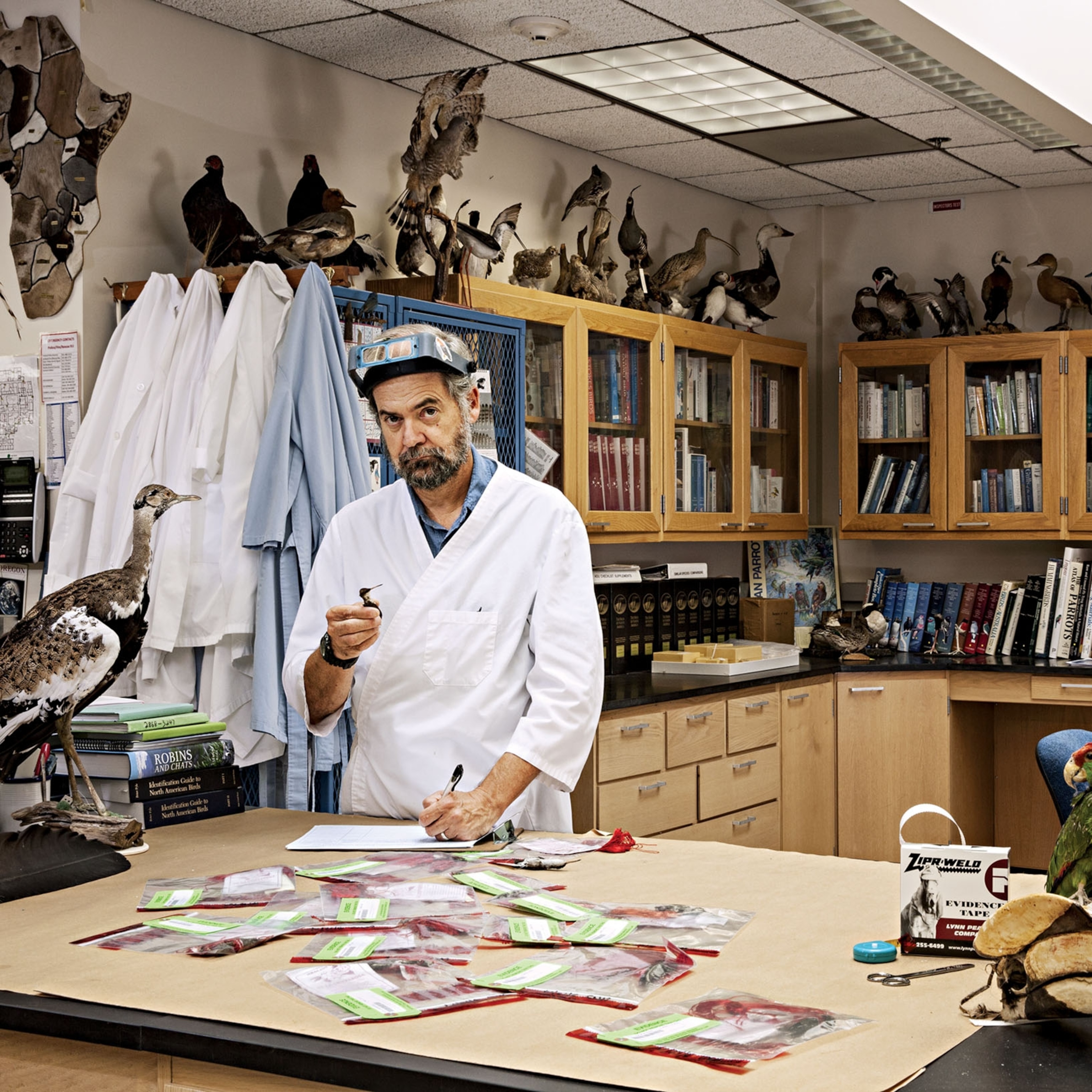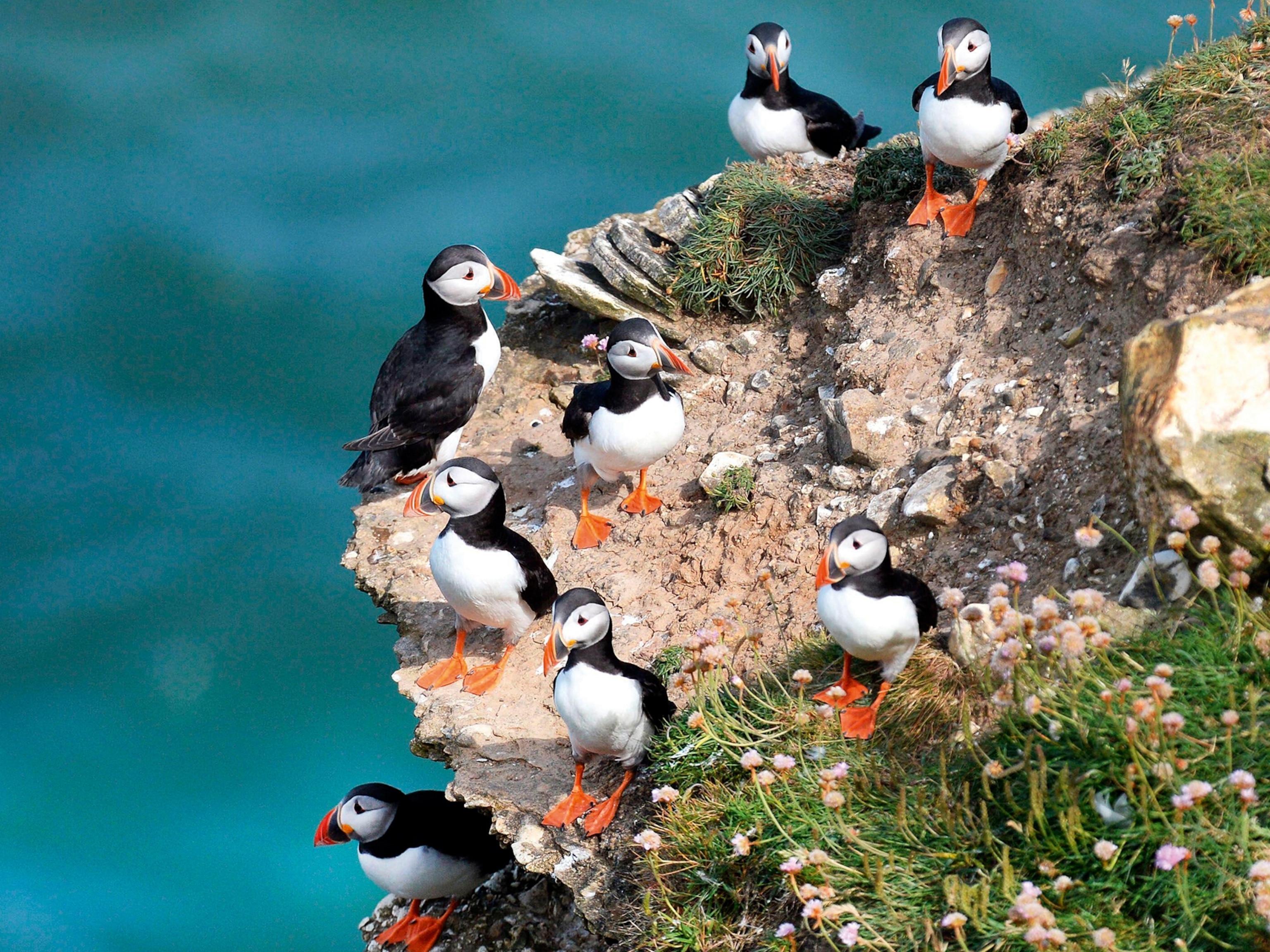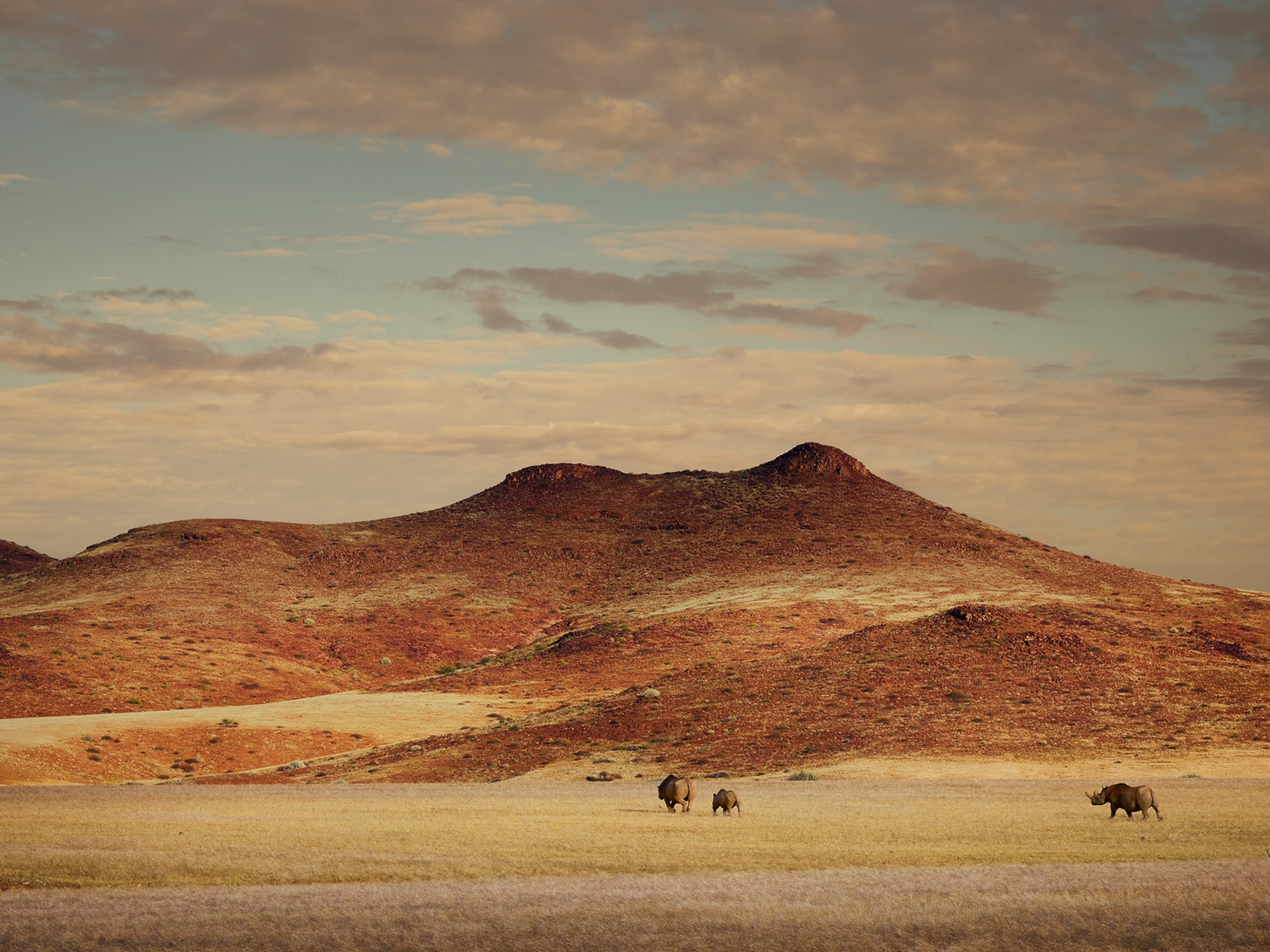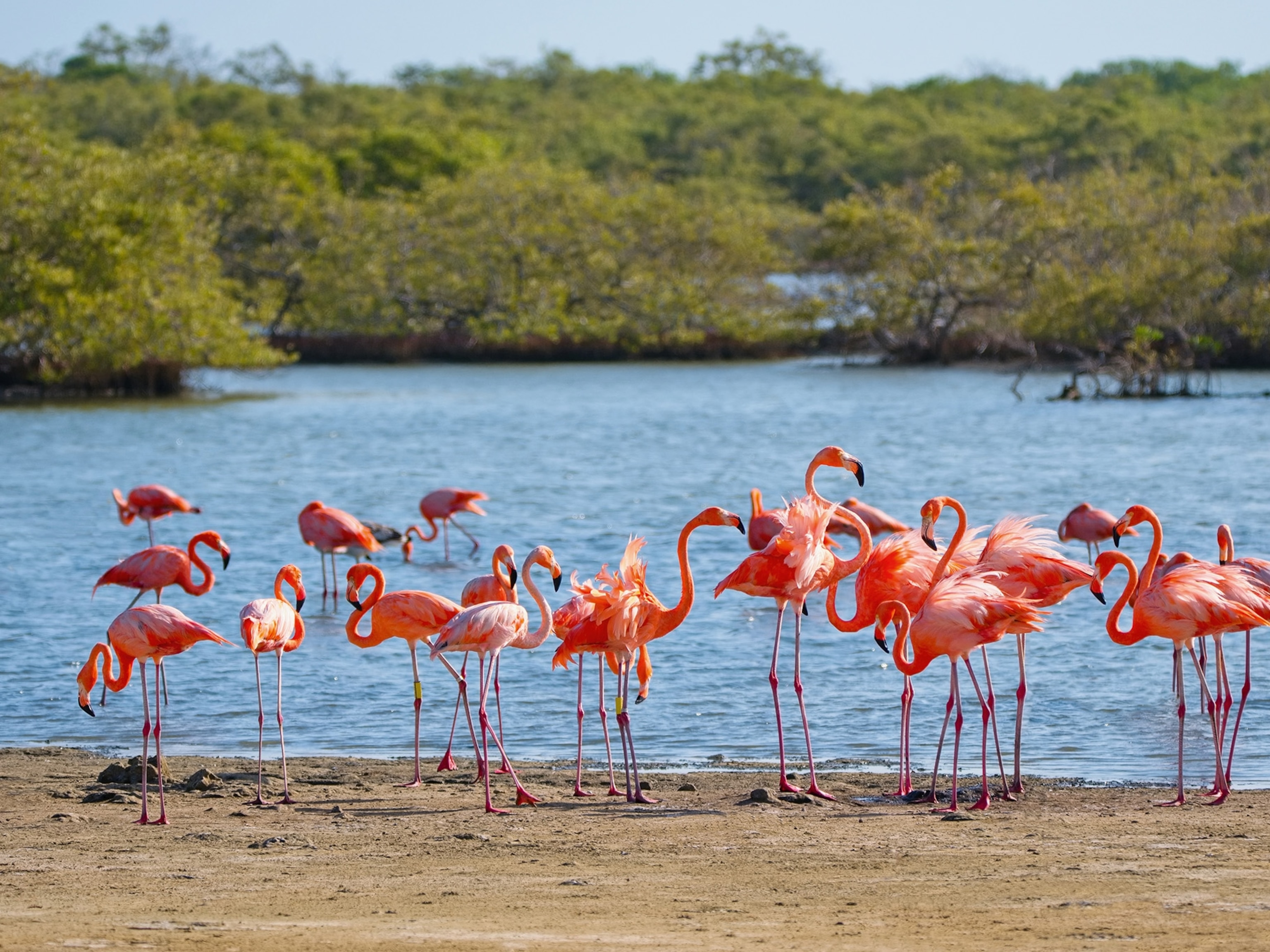
How Cuba’s popular songbird competitions are putting wild birds at risk
Online sales of wild birds, conducted openly in violation of Cuban laws, are booming.
The men began arriving with their champion crooners early on a Sunday morning. Sidestepping the tall weeds and trash mounds that blocked the narrow path, they gathered at a secluded spot in Havana. It was September—bird migration season in Cuba—and the recent influx of coveted songbirds had set off a flurry of illegal trapping and selling. Painted buntings, indigo buntings, and rose-breasted grosbeaks, a collective riot of color and song, were in high demand. Sundays were popular for songbird competitions.
Days earlier, someone posted the venue on one of the dozen Cuban songbird Facebook groups I’d joined in July 2021. Because of coronavirus restrictions, I couldn’t travel to Cuba, and a local contact agreed to attend the clandestine meetup for me on condition of anonymity.
A 2011 Cuban law on biological diversity prohibits capturing many songbirds for anything but scientific research. Competitions, with wagers on birds that sing the longest, most melodious tunes, are illegal too. Yet people openly post footage from the contests, and some Facebook posts offering songbirds for sale explicitly note ones that were captura—trapped in the wild.
Pandemic lockdowns have pushed even more of the illegal commerce online, says Xochitl Ayón Güemes, an ornithologist and bird curator at the National Museum of Natural History, in Havana.
Cuban officials did not respond to requests for details about songbird trapping and smuggling and prosecutions for those crimes.
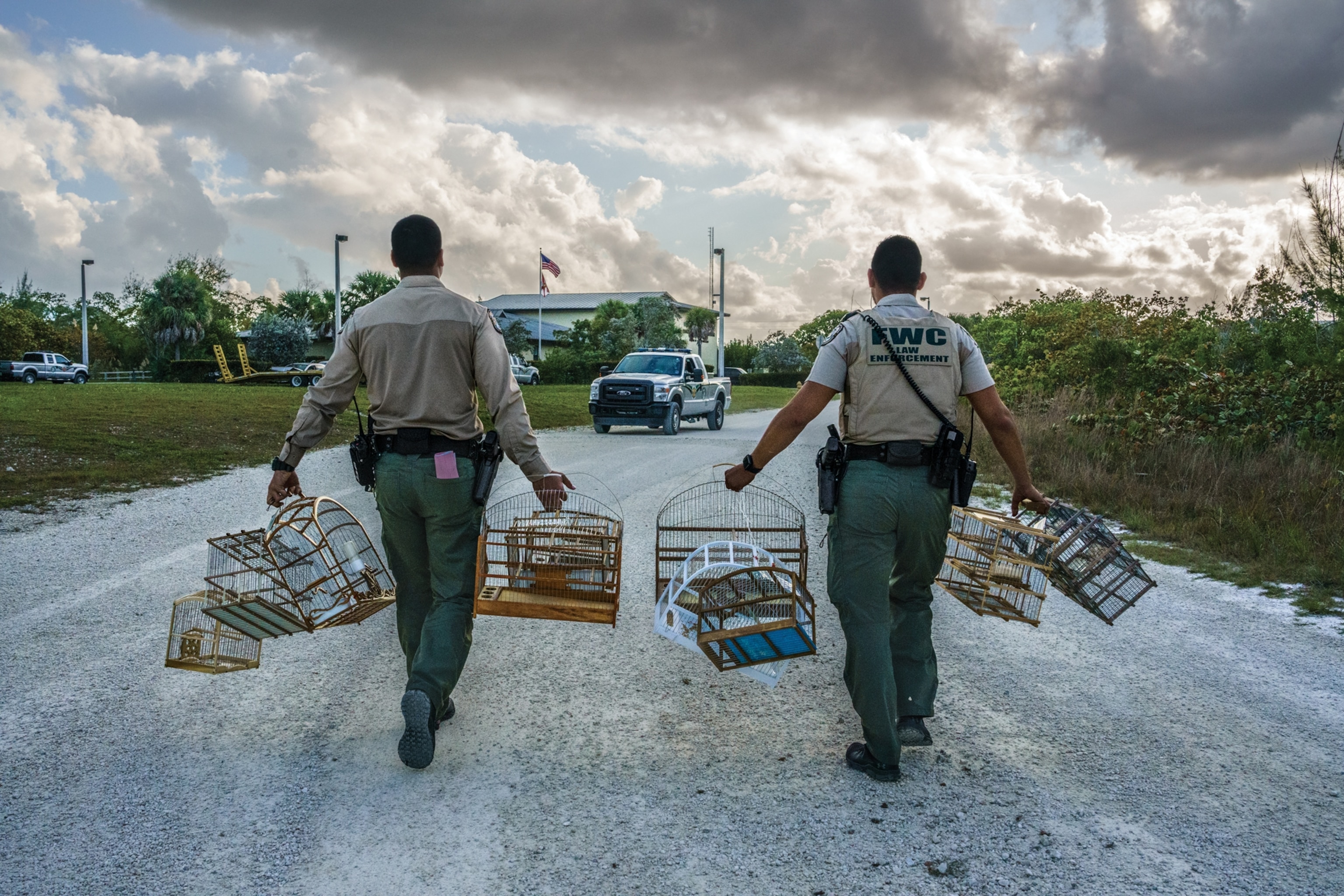
Keeping caged birds is seen as a tradition by many Cubans, “so despite it being a violation, it has been something socially accepted,” says Maikel Cañizares, an ornithologist at the Ministry of Science, Technology and Environment.
The hobby dates back to the Spanish conquerors and has become increasingly common, says biologist Giraldo Alayón García, former president of the Cuban Zoological Society and now president of Fundación Ariguanabo, a nonprofit that promotes nature, science, and culture. Many Cubans want to have colorful birds in their homes to enjoy their songs and beauty, and people pass this tradition on from generation to generation, he says.
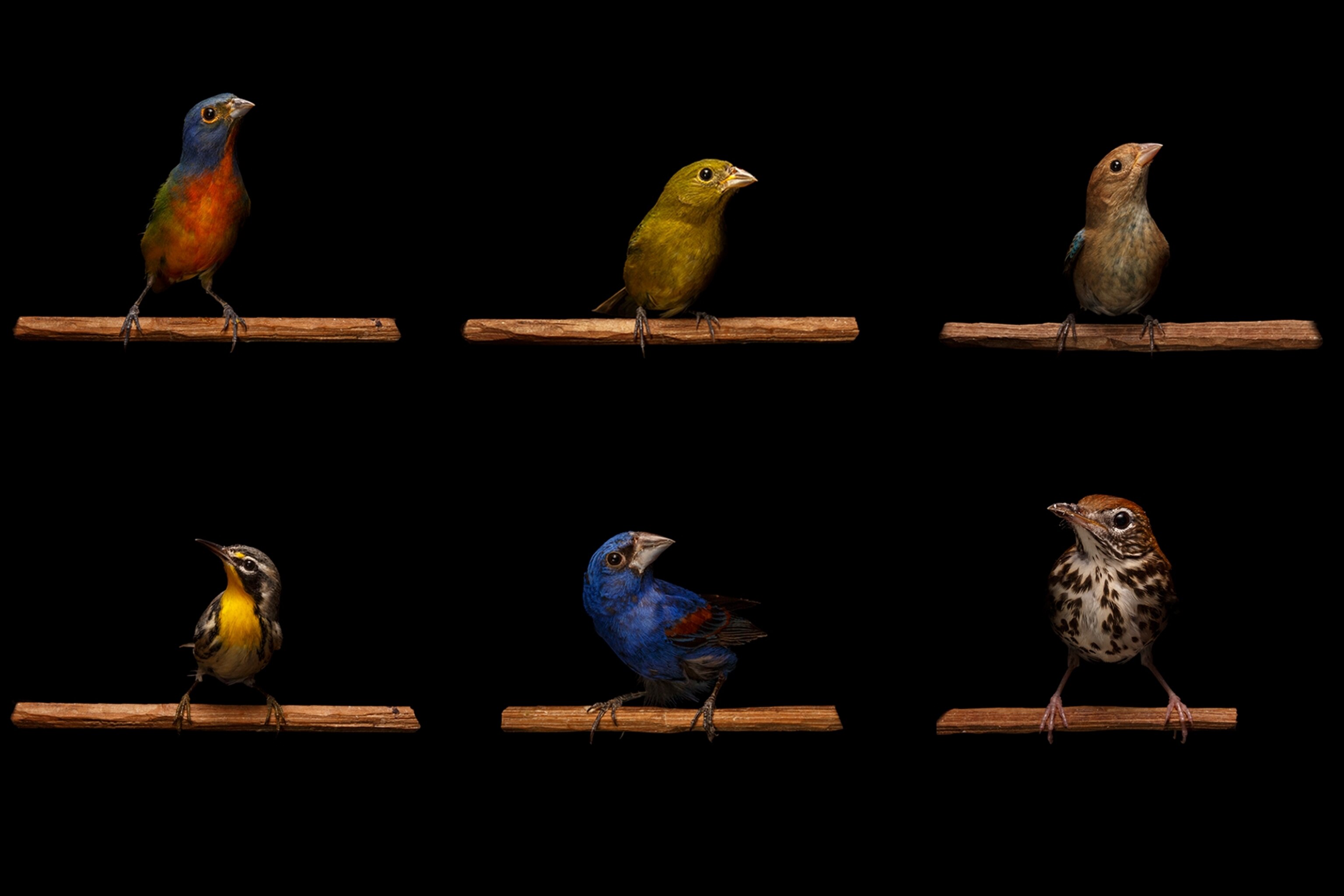
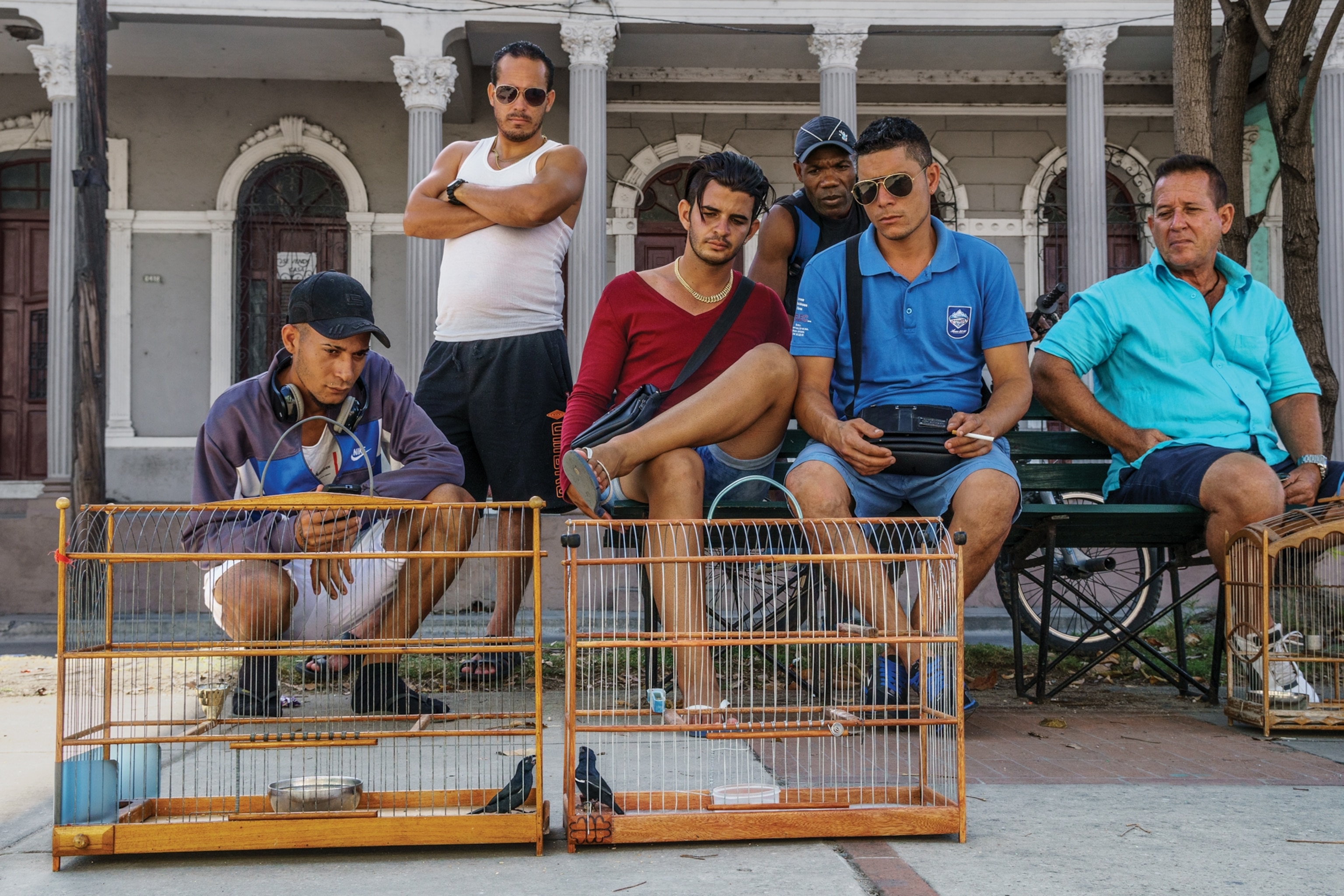

For some Cubans, songbirds are also a business. Recent food shortages and the economic strain of U.S. policies have increased desperation for cash, and illegally trapping wild songbirds is cheaper and easier than breeding them at home.
“The amount of money to be made from [the songbird trade] is pretty limited,” says Lillian Guerra, professor of Cuban and Caribbean history at the University of Florida. On Facebook, some birds may be advertised for no more than $20. Competition wagers vary widely—up to thousands of dollars.

The trapping of wild songbirds is taking a toll, however. “Today,” says Alayón, who is 75, it’s “almost impossible” to find a Cuban grassquit in some places, though “they were common when I was a child.” The birds, endemic to Cuba, are admired for their clear, high-pitched song and the bright yellow flourish behind their eyes and around their neck. Alayón says his father used to keep Cuban grassquits but he finally persuaded him to set them free. There’s “no doubt,” Alayón laments, that the Cuban grassquit is now “imperiled because of the trapping activities.”
With their vibrant red chest, blue head, and green wings, painted buntings (known in Cuba as mariposa, meaning “butterfly”) also are at risk. The birds migrate between the southeastern United States and the Caribbean, and their numbers have plummeted in recent decades as a result of habitat loss and the illegal trade in Cuba and elsewhere, according to periodic population counts of North American birds.
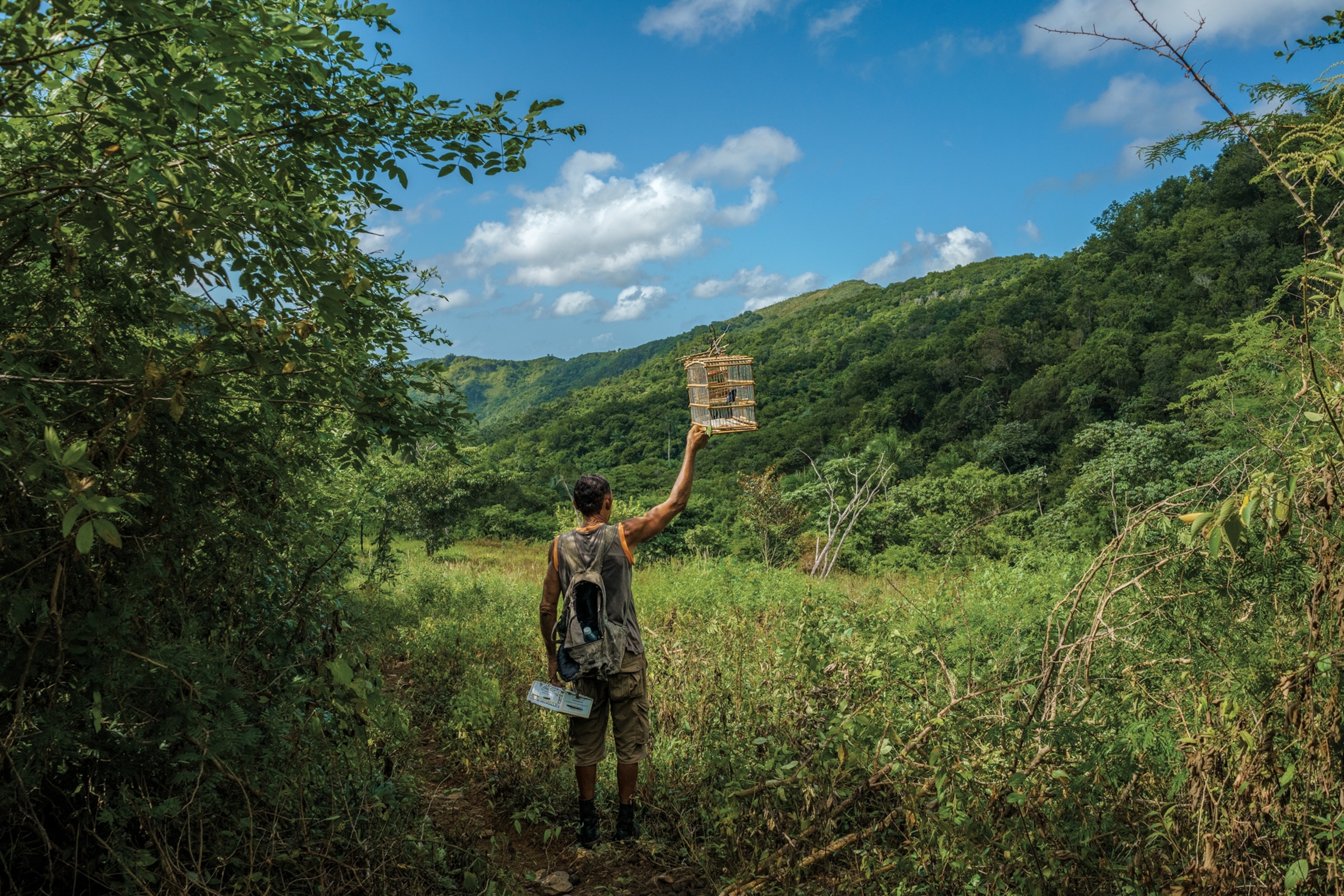
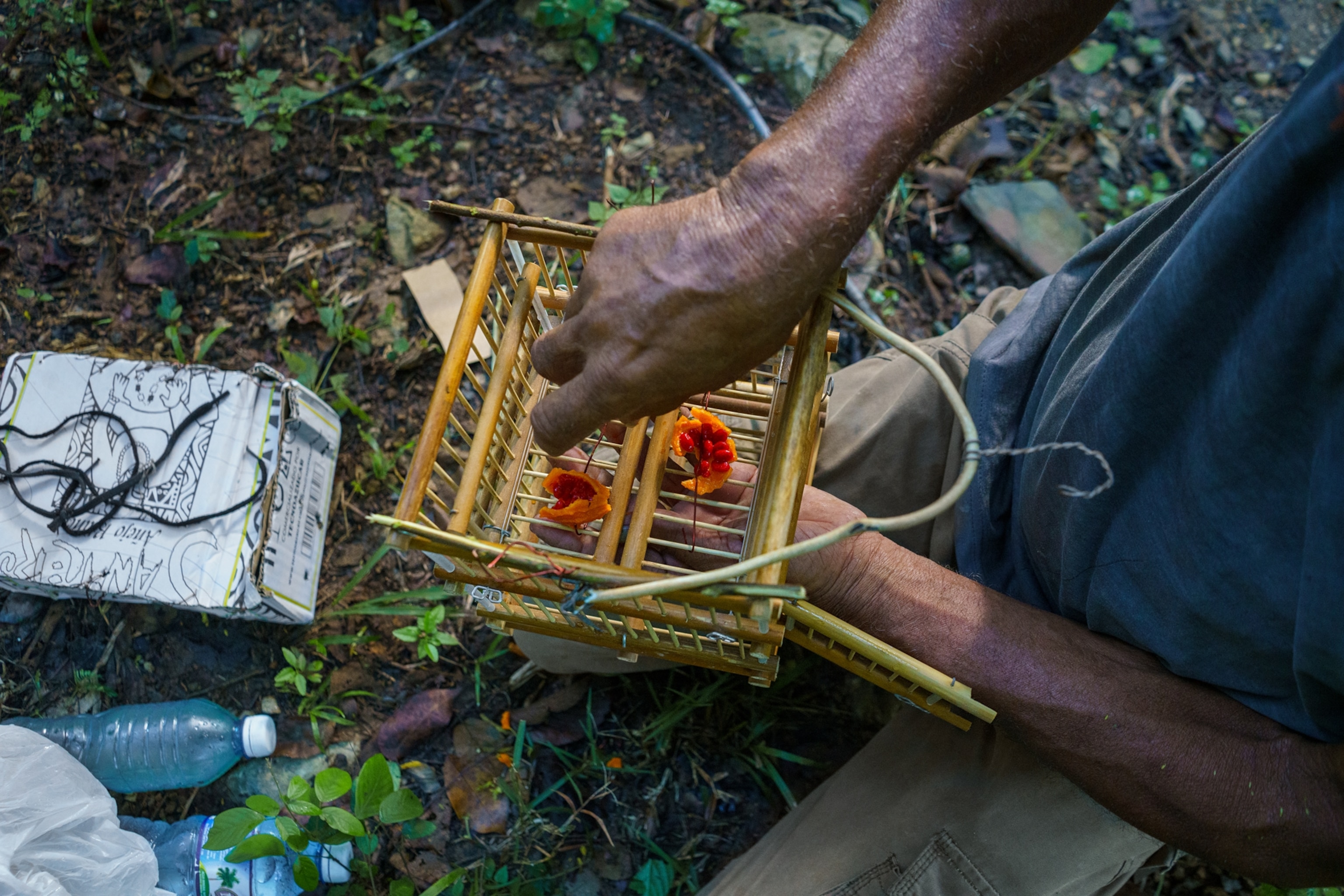
“There’s so little information on how many birds are being captured,” says painted bunting expert Clark Rushing, a University of Georgia professor. In a 2004 account, three trappers caught roughly 700 painted buntings in one Cuban province in a single weekend. Such numbers are common anecdotally, Rushing says, but it’s hard to know whether they’re outliers.
To track the migration of painted buntings, five years ago Rushing and his team used nets to catch the birds in their breeding grounds in Florida and other states. The team put ID bands around the birds’ ankles, fitted them with tiny backpacks containing geolocators, and released them. The researchers found that buntings migrating all the way to wintering grounds in Cuba were 20 percent less likely to return north than birds making shorter journeys. The long flight over open water may explain some of the losses, Rushing says, but trapping also may be a factor.
Photographer Karine Aigner says that when she was in Cuba, trappers agreed to sell her a geolocator they’d removed from a bunting they’d just captured. “We were able to confirm it was a bird originally banded in South Carolina,” Rushing says. The trappers told Aigner it wasn’t the only banded painted bunting they’d caught.

Teenagers do a lot of the illegal trapping, says Eduardo Iñigo-Elias, a retired senior researcher at the Cornell Lab of Ornithology. “They challenge each other to see who can trap more birds and get some cash,” he says.
Some Cubans mourn their birds when they die. But when people train songbirds to compete, they may put them in stressful situations, forcing them to learn songs played in a constant loop. Younger trappers are “more cruel,” Ayón Güemes says. Some give their birds steroids to invigorate their performances. “Old people don’t use steroids” on their birds, she says, but young owners also may cauterize contestants’ eyes with a hot spoon, hoping that territorial birds unable to see their opponents will keep singing.
Public pressure is building in Cuba to stop the songbird trade. In August 2020 President Miguel Díaz-Canel Bermúdez tweeted, in Spanish and English: “We must tackle illegal actions against the flora and fauna. NO to the smuggling of wild birds!” Accompanying his words were images of songbirds, including the painted bunting and Cuban grassquit.
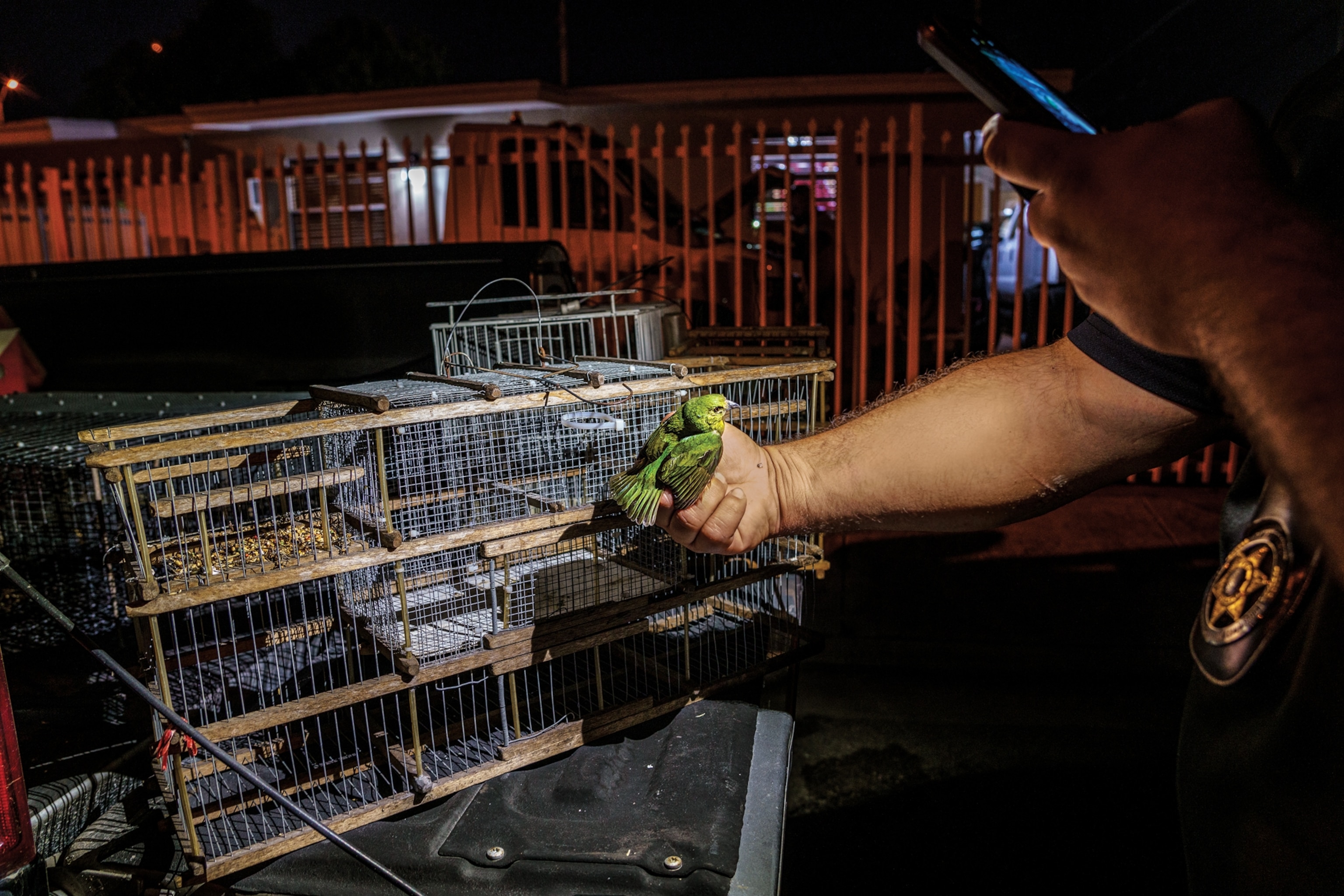
Songbird trapping has spread to the United States, particularly around Miami, a Cuban American stronghold. Thousands of songbirds in Florida—including some, such as painted buntings, that migrate there from Cuba—are captured in woods and backyards each year. Many trappers are of Cuban descent, according to Florida law enforcement.
Birds are also smuggled from Cuba. In January 2016, customs officials at Miami International Airport snagged Hovary Muniz, a Miami resident who’d arrived from Cuba with nine songbirds concealed in a fanny pack and in plastic tubes in his underwear. After he continued selling protected migratory birds while on probation, he was sentenced to 15 months in a U.S. prison.

People want to be close to nature, Alayón says, and trapping songbirds is entrenched in Cuban culture. “The most difficult thing in the world in Cuba is to change the mind of the people,” he says.
At the Sunday songbird competition in Havana, my contact reported that a police patrol appeared before noon. But no one was arrested—the bird handlers had vanished. One onlooker offered this explanation: They’d been tipped off that the police were on their way.
This story appears in the April 2022 issue of National Geographic magazine.
The National Geographic Society supports Wildlife Watch, our investigative reporting project focused on wildlife crime and exploitation. Read more Wildlife Watch stories here, and send tips, feedback, and story ideas to NGP.WildlifeWatch@natgeo.com. Learn about the National Geographic Society’s nonprofit mission at natgeo.com/impact.


